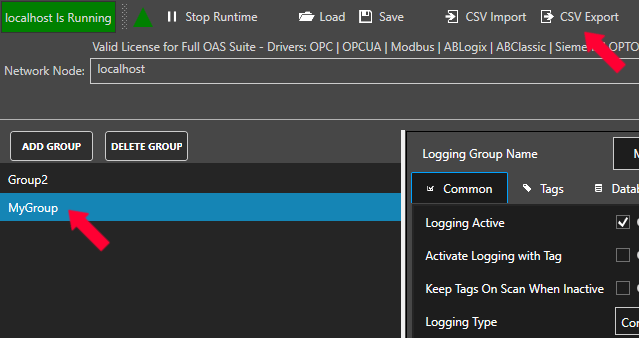

- EXPORT CSV FROM ELASTICSEARCH TRIAL
- EXPORT CSV FROM ELASTICSEARCH SERIES
- EXPORT CSV FROM ELASTICSEARCH DOWNLOAD
EXPORT CSV FROM ELASTICSEARCH TRIAL
You can run a trial on an Elasticsearch Cloud ( ) instance and ingest your data with just little work. For example from the 356 Stations, around 200 are located in Manhattan, and 36 stations have elevators.Īs you can see, starting from scratch with a CSV file is very simple. With Kibana you can select a specific rectangle and also filter on a value such as “Elevator”. By choosing the geolocation field and the cardinality of the station name, we get an easy and quick view of the existing stations.īy adding some additional Visualizations, such as a Saved Search and type of entrance, we can easily build a tool to search for specific Subway stations in New York city.Īs we can see here, downtown Manhattan is the area with the most Subway Stations. For that, we need to go to Visualizations and choose the Tile Map type.
EXPORT CSV FROM ELASTICSEARCH SERIES
You should unclick the “Index contains time-based events” option as it is not time series data (our data doesn’t contain a date-time field).Īfter this we can go and first create our Tile Map visualization showing all the subway stations that we have in this dataset for New York City. For that, just go to Management and add the index pattern subway_info_v1. In order to build the dashboard, first we need to add the index pattern to Kibana. At the end of the ingest process you will end up with 1868 stations in the subway_info_v1 index.

In order to make it faster and more robust for production use cases, we recommend you use the bulk API to index these documents. Note that here we are using the index API and not the bulk API. Let it run for a while and it will create each document one at a time. For this, we will send the data to elasticsearch using the following script:Ĭurl -XPOST '' -H "Content-Type: application/json" -u elastic:XXXX -d ""ĭone < NYC_Transit_Subway_Entrance_And_Exit_Data.csv In order to be able to search and build dashboards, we need to parse the plain text into a structured json. This can be done with your prefered tool. In order to be able to parse the file, we need to replace all double quotes with single quotes and delete the first line of the file (header) before processing it. In addition to this, we need to enable Kibana to use the Developer tools and also to build the Dashboard. Elastic Cloud will give us an endpoint for our Elasticsearch instance. We will use a Linux script that is composed with a simple loop to iterate through the CSV lines and send it to our cluster on Elastic Cloud.
EXPORT CSV FROM ELASTICSEARCH DOWNLOAD
We will download the CSV file with this data from the Export to CSV feature included in the following website. To start, we are going to use a small Elastic Cloud cluster with 2GB of Memory and 48GB of Disk.


Our data will come from a text file, and will turn into insights. With all this in place, we will be able to visualize the data and answer some questions such as “Where can we find a station with Elevators?”, “Where are most of the Stations located?”, “Which is the most dense area?” among others. We will use the Ingest feature from Elasticsearch instead of Logstash as a way to remove the need of extra software/architecture setup for a simple problem that can be solved just with Elasticsearch. The goal will be to use the Ingest feature of Elasticsearch in a cluster on Elastic Cloud to parse the data into a structured json, index the data, and use Kibana to build a Map of New York City that includes all this railway stations. This CSV file was updated in October 2015 and It consists of 32 fields which draws the complete railway station entrances and exits lists. We will go over what is an Ingest Node, what type of operations one can perform, and show a specific example starting from scratch to parse and display CSV data using the Elasticsearch and Kibana.įor that we will use an open catalog of community issues from New York, NY. The idea of this article is to go over the capabilities of some of the features of Ingest node, which will be combined to parse a Comma Separated Value (CSV) file.


 0 kommentar(er)
0 kommentar(er)
